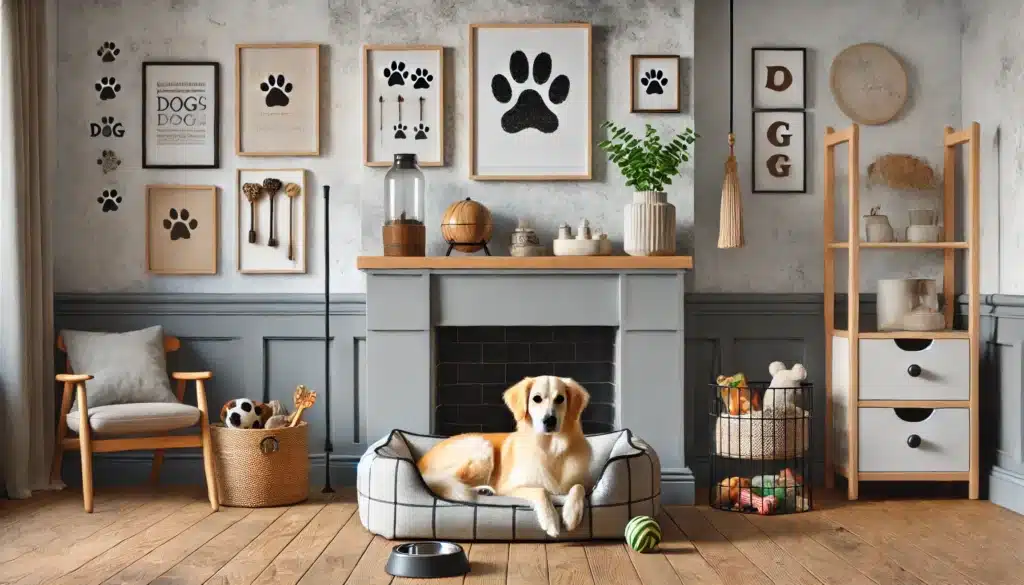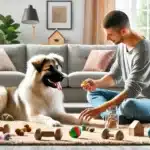Your dog is more than a pet — they’re family. And just like any family member, they deserve a space in your home where they can feel safe, comfortable, and relaxed. Whether you live in a house, apartment, or tiny studio, creating a dedicated dog area is easier than you think — and it makes a big difference in your dog’s happiness and behavior.
In this guide, we’ll walk you through how to design the perfect dog space, including location, must-have items, layout tips, and ways to make it feel like home for your furry friend.
Why Your Dog Needs Their Own Space
A designated dog space helps your dog:
- Feel secure and calm
- Have a routine and sense of ownership
- Reduce anxiety and overstimulation
- Improve rest and sleep quality
- Know where to go when they want quiet time
It also benefits you by minimizing mess, protecting furniture, and creating boundaries that help with training and behavior.
Step 1: Choose the Right Location
You don’t need a whole room — just a cozy, safe corner that fits your dog’s personality and size.
🐾 Ideal Spots:
- A corner of the living room
- A section of the kitchen
- Under a staircase
- An empty closet with the door removed
- A space near you (if your dog likes to be close)
- A quiet room for dogs that prefer solitude
Avoid areas that are:
- Too hot or cold
- Next to loud appliances (washer, dryer, TV speakers)
- In high-traffic walkways
Tip: Choose a location that allows your dog to feel included, but not overwhelmed.
Step 2: Provide a Comfortable Bed or Rest Area
Comfort is key. Your dog needs a place to nap, stretch, and feel secure.
Options include:
- A padded dog bed with raised sides for a “nest” effect
- A flat mat for dogs who overheat easily
- A crate with soft bedding (especially for crate-trained dogs)
- Orthopedic beds for senior dogs or large breeds
Make sure it’s washable and appropriately sized — your dog should be able to lie flat and turn comfortably.
Step 3: Add Essential Items
Turn the space into a true retreat by including these must-haves:
| Item | Purpose |
|---|---|
| Food and water bowls | Especially in multi-pet households |
| Toys | For comfort, play, and mental stimulation |
| Blanket or towel | Adds softness and familiar scent |
| Storage basket | Keep toys and accessories organized |
| Chew toys or bones | Helps with anxiety and boredom |
| Calming aids | Like pheromone sprays or calming diffusers (optional) |
Pro tip: Rotate toys every few days to keep your dog engaged and interested.
Step 4: Make It Personal
Dogs respond positively to familiar smells and surroundings. Personalize their space with:
- A blanket or shirt that smells like you
- Their favorite toy
- Their name on a sign or mat (for fun!)
- Natural light or a view, if possible
Adding these personal touches helps your dog feel like this space is theirs — not just a corner you chose at random.
Step 5: Establish Boundaries (Calm, Not Isolation)
Your dog’s area should be inviting, not restrictive.
- Avoid using their space as punishment
- Use positive reinforcement to encourage them to spend time there
- Give them treats or meals in the space to create a happy association
- Teach cues like “Go to your bed” or “Place” to build calm behavior
For puppies or new rescues, gates or pens can be helpful for safety and structure.
Step 6: Keep It Clean and Safe
A clean dog space is a healthy dog space.
- Vacuum or sweep daily to remove hair and dirt
- Wash bedding weekly
- Sanitize food and water bowls regularly
- Check for choking hazards or loose objects
- Keep cords, trash, or toxic plants out of reach
Optional Additions for Extra Comfort
Want to go the extra mile? Try adding:
- A cooling mat in summer or heated pad in winter
- A white noise machine to reduce stress
- Soft lighting or lamps for low-stimulation rest
- Raised dog beds for air circulation
- Curtains or covers for cozy, enclosed den-like feel
These additions can be especially helpful for anxious, senior, or highly sensitive dogs.
Examples by Home Type
🏙️ Small Apartment:
- Use a corner of your living room with a low-profile mat
- Install floating shelves above to save floor space
- Choose multifunctional furniture with built-in dog nooks
🏡 House with Yard:
- Combine indoor and outdoor access with a dog door
- Use a mudroom or laundry area as a dog zone
- Create a doggy “studio” near the back entrance with storage and feeding station
🧺 Shared Spaces:
- Teach children to respect the dog’s area
- Use visual barriers (plants, shelves) to define the space
- Include the dog zone in family routines, like story time or movie night
Final Thoughts: Your Dog Deserves a Space to Call Their Own
Creating a dog space at home isn’t about isolating your pet — it’s about giving them freedom, comfort, and control in their environment. With the right setup, your dog will have a peaceful retreat they can return to anytime they feel tired, overwhelmed, or just in need of a cozy nap.
Whether you have a high-energy pup, a senior companion, or a brand-new rescue, a dedicated dog area shows them love, security, and respect.
And in return, you’ll enjoy a calmer, happier dog — and a more organized, peaceful home.







